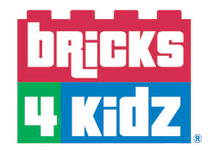This classic TED Talk looks at another kind of mind
This TED Talk is ancient, in internet years, but if you have children in school, it’s essential viewing. Temple Grandin’s “The World Needs All Kinds of Minds,” offers a look at the geeky kid, the kid who isn’t fitting in. In particular, she’s talking about the kid who is on the Autism spectrum and what he or she needs to thrive and grow.
Grandin is well known for her work in improving cattle facilities and for being open about her experiences while making her way in a world that is built for “neurotypical people.” That’s no different in this TED talk, and even six years later, her talk is a powerful piece of advocacy for children who deserve good opportunities.
Grandin is a visual thinker in a world where most people think verbally. If you are asked to picture a steeple, you might come up with a generic prototype, perhaps something towering over a little white church. And your mind will be pretty happy with that. Grandin, however, would picture a specific steeple that she knows. Then, her mind moves to another specific steeple. Then another. Famous steeples, steeples from her childhood cityscape. Her mind gets to work coming up with the many possibilities of steeples.
Her work with cattle gave her further insight into what it is to have a visually oriented mind, which tend to think in categories. A horse, for example, will make a distinction between people on horseback from people on the ground. Therefore, a horse that was abused by a rider won’t allow anyone to ride him, which is what you’d expect. Yet he is perfectly fine when, say, a veterinarian examines him.
This is a very familiar trait in the world of engineering. As a visual thinker, she can test her designs in her mind. At the same time, however, someone on the Autism spectrum may not be a visual thinker at all; they may think in patterns or have a propensity for mathematics and music.
Along with providing insights regarding what it’s like to move through this world, she is also an advocate for these children. She makes a case that they are our future inventors, so we need to be sure we teach them well. “Because who do you think made the first stone spears? The Asperger guy. And if you were to get rid of all the Autism genetics there would be no more Silicon Valley, and the energy crisis would not be solved.”
With that in mind, we need to look for outlets and opportunities.
- Show them interesting things: Look for concepts and puzzles that are engaging and complex.
- Build the momentum: It’s not uncommon for children on the Autism spectrum to become fixated on something. Use that fixation as a teaching tool, or as a starting point for introducing new concepts.
- Mentorship: She talks about pairing kids with people who are well versed in science and technology, such as community college professors or retired tech workers, who can show them interesting, hands-on activities that will engage their minds. Even if the retired tech worker’s knowledge is old and outdated, that’s irrelevant, because “you’re lighting the spark. You’re getting that kid turned on. And you get him turned on, then he’ll learn all the new stuff.”
- All children deserve opportunities. We have to think creatively to help them find something they love. Check out our programs at Bricks 4 Kidz
Our Valued Customers
"My son learned how to make his favorite dinosaur as a LEGO® robot at a party! He loves to go to Bricks 4 Kidz after-school classes now"
— Miranda K.Jacksonville, FL
We learn, we build, we play with LEGO® Bricks
Copyright © 2015 Bricks 4 Kidz. All rights reserved. PRIVACY POLICY | CORPORATE CONTACT
LEGO® and DUPLO® are registered trademarks of the LEGO® Group of companies which does not sponsor, authorize or endorse these programs or this web site.

